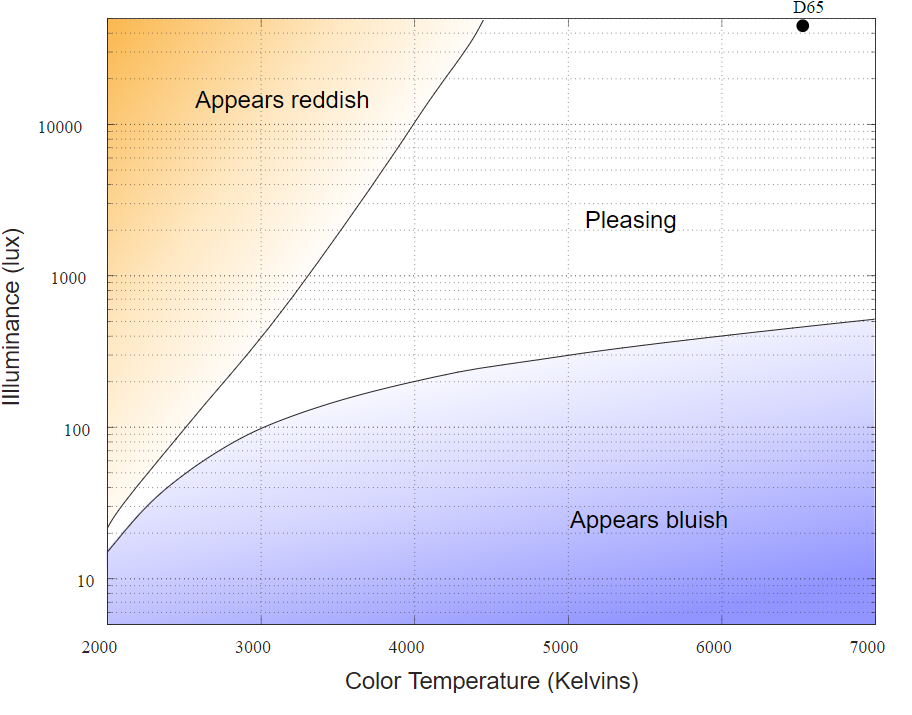
Top 4 Things To Consider Before Buying 6500K Daylight LED Bulbs
Top 4 Things To Consider Before Buying 6500K Daylight LED Bulbs
Are you looking for Daylight White LED bulbs? Unsure about whether 6500K is the best color temperature? Read our 4 point guide before making that purchase!1) Be sure that you truly need 6500K daylight LED bulbs
6500K daylight LED bulbs are not for everyone, especially in a residential application. Although home lighting choices are ultimately a matter of personal preference, most people will find that daylight white lamps are too blue or harsh to relax at night time.
Our bodies are naturally accustomed to warmer light colors after sunset. Since the invention of candles and incandescent lighting, throughout history, artificial lighting was limited to warm white color tones only.
With the advent of fluorescent and now LED lighting technologies, however, daylight white lighting is now accessible 24 hours, even where natural daylight cannot reach.
Many tasks and professional applications do require 6500K daylight white lighting, either due to insufficient ambient lighting during the day, or for extended use during evening hours.
Artists, photographers, manufacturers (especially those that involve paints and textiles) and people with certain medical conditions such as seasonal affective disorder (SAD) can benefit and rely on 6500K daylight white LED lights to ensure their lighting conditions are similar to what they get during the daytime.
For some applications, 5000K offers a slightly "warmer" alternative that can work just as well. See our article here comparing 5000K to 6500K.
2) CRI and light quality matters!
By definition, the color of the light emitted from a 6500K daylight white LED bulb will appear roughly the same as natural daylight. However, the appearance of objects under a low CRI (Color Rendering Index) daylight bulb does not necessarily appear the same as under natural daylight.
Did you catch the nuanced difference there?
CRI is invisible if you only look at the light source, but can be quite obvious when looking at the objects it shines on.
What determines high or low CRI?
Natural daylight contains all of the wavelengths in the visible spectrum, and the color we see in objects is the result of reflected light off of its surface. A low light quality daylight bulb, however, does not contain all of the wavelengths in the visible spectrum. As a result, the reflected light we see bounce off of objects appears distorted, dull or simply different.
Learn more about CRI here.
If you are searching for 6500K daylight white lighting, chances are, you care about the appearance of objects being accurate, or similar to natural daylight. If that is the case, you must consider CRI in your product search.
When it comes to CRI for 6500K daylight white LED lamps, we recommend choosing 95 CRI, and R9 > 80 as a minimum criteria.
3) Light quantity matters, too!
In the 1940s, a Dutch physicist named Arie Kruithof conducted a study to determine the relationship between illuminance (lux) and color temperature (K) as it relates to how pleasant humans perceive the lighting to be.

When plotted on a chart, he discovered that to be considered pleasant, higher color temperatures required higher illuminance levels.
Based on his research, for 6500K daylight white, the recommended minimum illuminance level is approximately 500 lux.
Ever wonder why dim daylight white CFLs appear dull and "blue" - but natural daylight is very energizing and pleasant? It's caused by a combination of insufficient color quality (CRI) and quantity (lux).
When lighting a space (e.g. studio), in addition to providing enough illuminance necessary to complete your tasks or work, but also be sure you have more than 500 lux (preferably 1000 lux) to ensure that you create a comfortable space.
Keep in mind natural daylight ranges from 10,000 lux to 100,000 lux, so it takes quite a few bulbs to get to the point where you have too much brightness.
4) Be wary of "full spectrum" and other vague terms
Full spectrum lighting is a similar term that some people may consider to be synonymous to 6500K daylight white lighting.
At its essence, full spectrum simply notes that (allegedly) all wavelengths of visible (and sometimes UV) light are present in the emission spectrum. It does not, necessarily, imply that the color of light emitted matches that of natural daylight.
Similarly, terms like "cool white" and "bright, crisp & clear" can be used to describe light that is close to, but not necessarily, 6500K daylight white. For example, 5000K is a common color temperature considered "cool" - but not appear the same as 6500K natural daylight.
We hope you enjoyed our 4-point guide on 6500K daylight white LED bulbs. Looking for more information? You might be interested in:
- Blog post: What is D65?
- Blog post: Color accuracy in lighting
Where to buy 6500K daylight white LED bulbs
- NorthLux Series 6500K Daylight White LED Bulbs
- FilmGrade 6500K LED Strip Lights
- ABSOLUTE SERIES D65 LED Linear Module
Other Posts
Browse Waveform Lighting Products
A-Series LED Bulbs
Our A19 and A21 lamps fit in standard lamp fixtures and are perfect for floor and desk lamp fixtures.
Candelabra LED Bulbs
Our candelabra LED bulbs offer soft and warm light output in a decorative bulb style that fits E12 lamp fixtures.
BR30 LED Lamps
BR30 lamps are ceiling lamps that fit in residential and commercial fixtures with 4-inch or wider openings.
